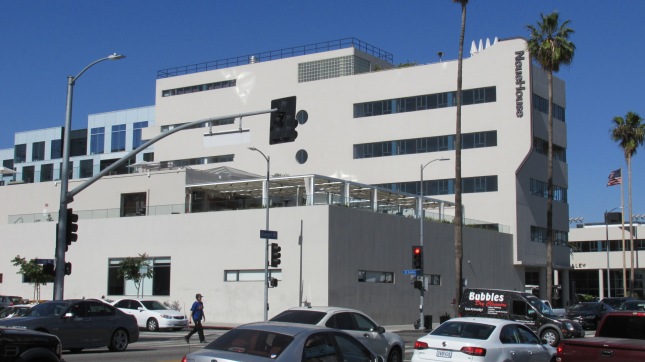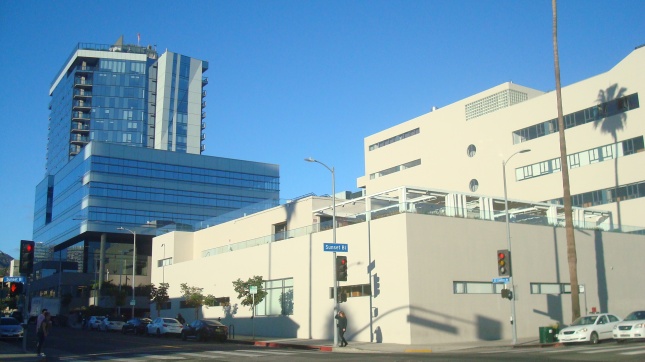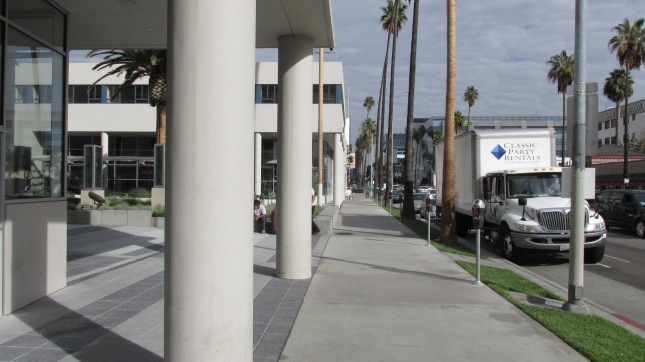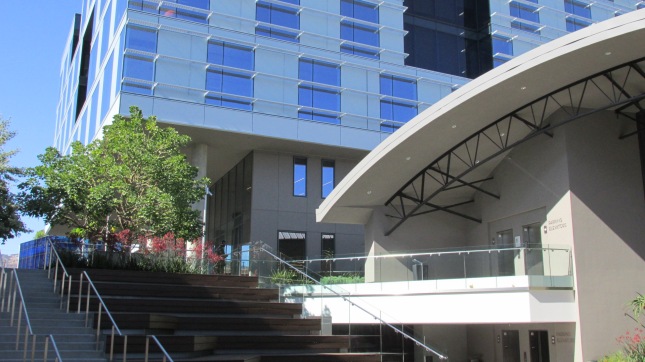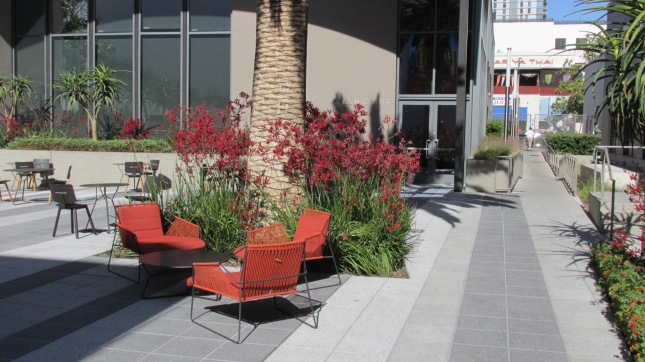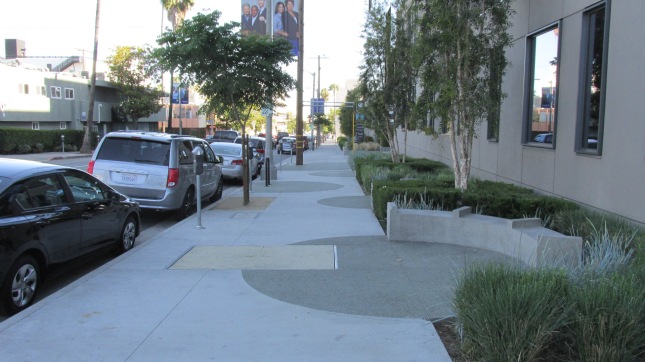
What does a building mean?
It’s an interesting question, and there’s no easy answer. Any building is going to have different meanings to different people. But the question is crucial when you start talking about preservation. Maybe we want to save a structure because it’s beautifully designed. Or maybe it held a special place in the community. Sometimes we want to hang on to a structure because of the role it played in the city’s history. Then again, there may be reasons why people want to see a building go away….
Back in 2016 I was at a City Planning Commission (CPC) hearing when Parker Center was on the agenda. The former home of the LAPD, the building has been closed for years. It was built in the mid-50s, and was orginally called the Police Administration Building (also the Police Facilities Building).* It was renamed Parker Center after the death of Chief William Parker in 1966. But it’s been empty since the LAPD moved into its new headquarters almost a decade ago. And since then the City has been trying to figure out what to do with it.

The marker at the entrance bearing the dedication to Chief Parker.
Actually, it doesn’t seem like there was much debate at City Hall over the building’s fate. A new master plan has been proposed for the Civic Center, and there seems to be general agreement that Parker Center needs to be demolished. But the LA Conservancy argued that the structure should be preserved, both because of its design and the role it played in LA history.
So on the day I was at the CPC hearing there were two speakers on different sides of the issue. One was Jeremy Irvine, who argued for saving Parker Center. He pointed out that it was designed by Welton Becket & Associates, an innovative architectural firm that played a crucial role in shaping the look of mid-century LA. Irvine went on to talk about the building’s place in the life of the city, arguing that it was an important piece of LA history.

A side view of Parker Center
The other speaker agreed that the building had played a role in LA history, but from her perspective it represented pain, loss and prejudice. Ellen Endo is a journalist with deep roots in Japanese community. She talked about how at the beginning of the 20th century Little Tokyo’s boundaries extended far beyond where they lie now, and how over the years LA power brokers have carved out large chunks of the neighborhood. The site where Parker Center stands now used to be a part of Little Tokyo. Endo said that for many in the Japanese community the building represented prejudice and opression.

A view of Parker Center from First Street
So at the hearing in 2016 the CPC heard two very different versions of what Parker Center means. And really, I think the discussion was moot. The Conservancy’s efforts delayed the process, but I believe it was decided long ago that the building’s coming down. The Board of Public Works will be reeciving bids for demolition through February 21. It will probably be gone by the end of the year.

The main entrance to the building. The sculpture, by Tony Rosenthal, is meant to depict a policeman protecting a family.
As to what’s going to replace it, I think that’s still an open question. While the City has an ambitious master plan for Civic Center, nobody knows where they’ll get the money to build it. The plan lays out a long-term vision with multiple phases, and it could be years before any real decisions are made. If you want to learn more, check out this article from the Downtown News.
(* Sam Fuller fans may remember that Parker Center is featured in The Crimson Kimono. Shot in Downtown during the late 50s, the film spends a good deal of time documenting life in Little Tokyo. It’s an amazing view of the community at that time.)


